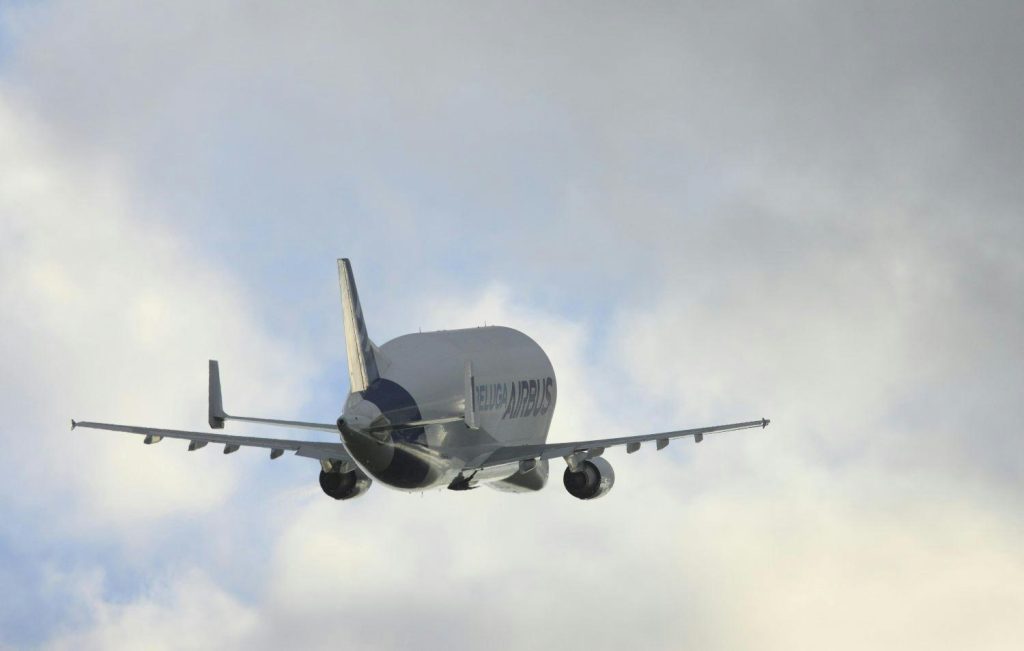TAMPA, Fla. — The Eutelsat 36D satellite made by Airbus landed in Sanford, Florida, on March 11 before a SpaceX Falcon 9 launch planned at the nearby Kennedy Space Center later this month.
Eutelsat 36D departed on Saturday on an Airbus BelugaST (Super Transporter) from France, where the satellite manufacturer is located. This is the third time the manufacturer’s alternative to Ukrainian Antonov aircraft has transported a large satellite across the Atlantic since Airbus started offering a large freight transportation service two years ago.
The satellite, which weighs about 5,000 kilograms, will be transported by truck to its launch site.
French fleet operator Eutelsat purchased the satellite in 2021 to replace Eutelsat 36B before it runs out of fuel in 2026 at 36 degrees East. It has been providing TV broadcast and government services across Africa, Russia, and Europe for more than 14 years.
Eutelsat 36D is equipped with 70 Ku-band transponders and is based on the Airbus Eurostar Neo platform with all-electric propulsion. This means it will take five to six months after the launch to reach its orbital slot and start operating.
Competition in transportation
Airbus also constructed the other two satellites that were transported from France to Florida using a Beluga: Viasat’s Inmarsat-6 F2 in January 2023 and Eutelsat’s Hotbird 13G in October 2022.
Hotbird 13G was carried on the first Beluga to visit the United States since the 2009 delivery of Europe’s Tranquility module for a Space Shuttle launch to the International Space Station.
Airbus aims to attract more customers seeking to transport satellites, built by companies other than itself, after receiving certification in November to operate the service under a dedicated airline..
While customers can use boats to transport spacecraft overseas, using aircraft can significantly reduce travel time and provide operators with greater certainty about meeting launch deadlines.
Although Antonov aircraft continue to be prominent in the space industry despite uncertain availability since Russia invaded Ukraine in early 2022.
On the day Eutelsat 36D took off on a Beluga from France, an Antonov 124 also departed from Germany for Vandenberg, California, carrying the European Space Agency’s climate monitoring EarthCARE spacecraft, or Earth Clouds, Aerosols and Radiation Explorer. SpaceX is expected to launch this Airbus-made spacecraft in May on a Falcon 9.
The Beluga is designed to offer a complementary service rather than directly compete with the Antonov, according to Airbus spokesperson Francisco Cadena.
According to Cadena, Belugas produce less pollution and are 10% wider, making them a better fit for larger spacecraft. However, Antonovs are better suited for heavier payloads on longer distances.









